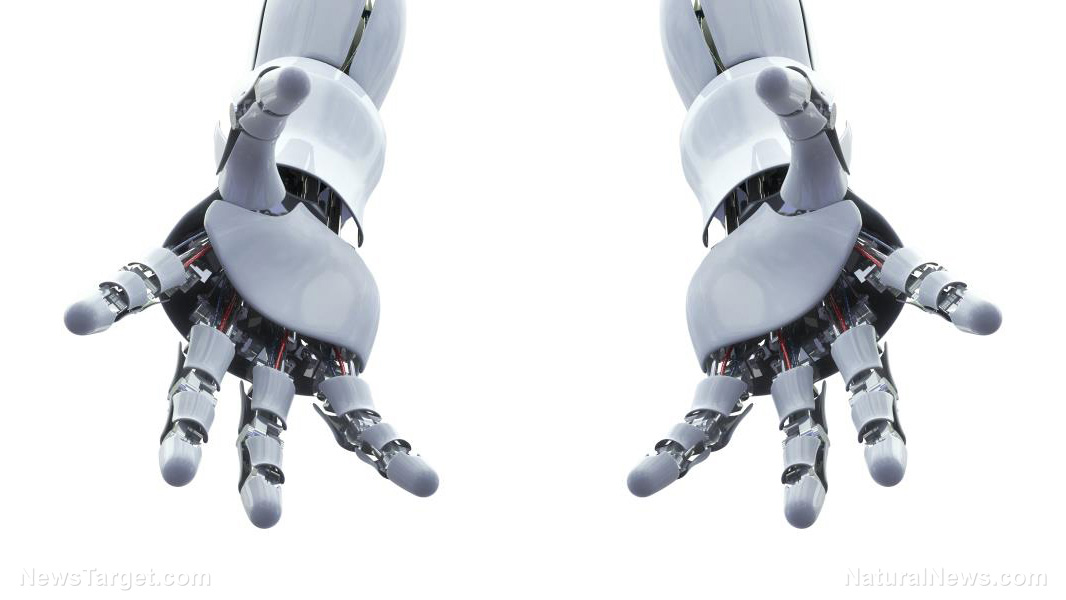Now they can hold you: Researchers develop robot arms with artificial muscles that can tense and relax like real muscles do
05/11/2018 / By David Williams

One of the things that would mark the beginning of a new era for robots is the development of a highly effective way for them to have a better grip on things. After all, the fact that humans have opposable thumbs – which gave us the ability to hold onto things in ways that animals can’t – helped in our proverbial rise to the top of the food chain. In this regard, a team of researchers has developed a system based on vacuum grippers that reportedly enable robot arms to pick things up and put them down freely in space.
A research team at Saarland University, led by Professor Stefan Seelecke, managed to create a system wherein it’s possible to generate a vacuum that’s energy efficient, quiet, and also suitable for use in so-called clean rooms. At the same time, the team’s specialists for intelligent materials systems made use of artificial muscles, which are described as being full of bundles of “ultra-fine shape memory wires” that can be made to tense and relax just like real muscle fibers do. What’s more, the wires are also able to function as sensors and can sense things, such as when the gripper needs to be adjusted or tightened.
When combined, these creations result in an effective method of allowing robot arms to keep a tight hold on things, and to carry them safely for as long as possible. Now the team will be exhibiting their vacuum grippers at the Saarland Research and Innovation Stand in this year’s Hannover Messe, as they look for potential industrial partners that can help them develop their system further into materials that have specific practical applications. (Related: Robot with advanced cyber-hand put to work harvesting cauliflower for the EU.)
Next gen vacuum grippers
Vacuum grippers are, of course, nothing new. They are common tools in industrial production lines, and are often used in tasks that involve sorting or simply handling smooth and relatively flat objects. The noise that comes with using vacuum grippers is typically accepted as normal, as the most common systems use compressed air in their operation, making them loud and requiring the use of heavy ancillary equipment. This ends up driving costs up and also increases the required amount of energy for projects to be done.
For their part, the researchers came up with a much better alternative. Their shape memory vacuum gripper system is said to be capable of producing a powerful vacuum with nothing more than a robotic arm that’s needed to guide it into the correct position. Shape memory, in this case, is referring to the fact that the material can “remember” its shape and eventually return to it after it has been deformed in one way or another by objects it has held. The overall system doesn’t require any extra electric or pneumatic drive systems to function, and is adaptable, cost-effective to produce, light, and can be used without producing much noise at all.
The only thing that the system really needs is an electric current. It runs on small pulses of electric current, which needs to come in two parts: The first is needed to generate the vacuum and the second one is needed to release it. Otherwise, no other electric power is necessary while the gripper has an object in its grasp, and it can remain in place for a very long time, if not indefinitely.
According to Felix Welsch, a research assistant who worked with the team on the project, the gripper can be improved even further. “Currently, the gripper is able to securely hold objects weighing several kilograms,” he said. “The gripper’s lifting capacity is scalable, with correspondingly more wires being used in large grippers.”
That certainly spells good news for the future of this system, which could one day lead to highly advanced robots that are close to humans in their ability to grip things, making them useful for a number of specific applications.
Find out more about the future of robotics technology in Robots.news.
Sources include:
Tagged Under: artificial muscles, cool tech, cyber hand, future tech, grip, machine learning, memory wires, muscle fiber, muscle grip, muscles, robot hands, robotic arm, robotics, robots, vacuum gripper




















